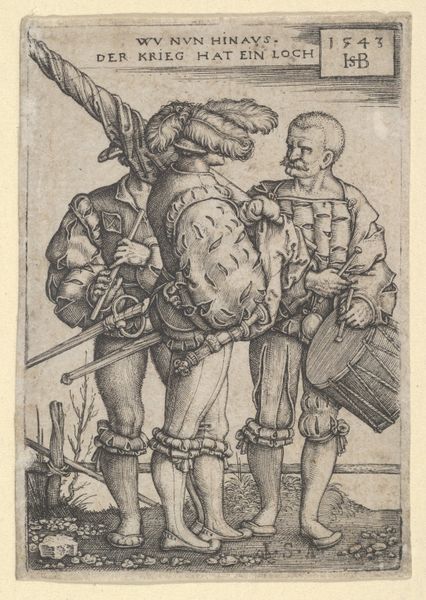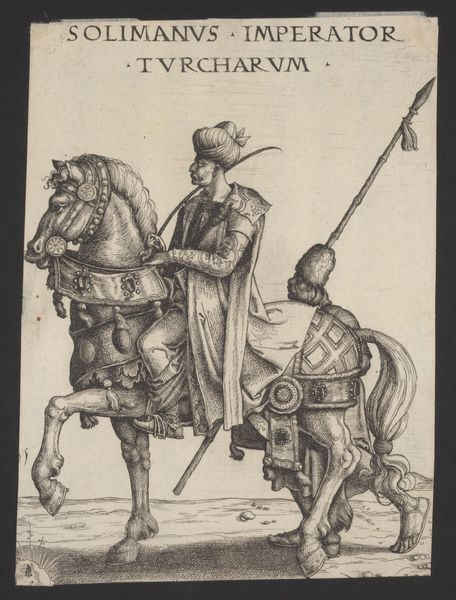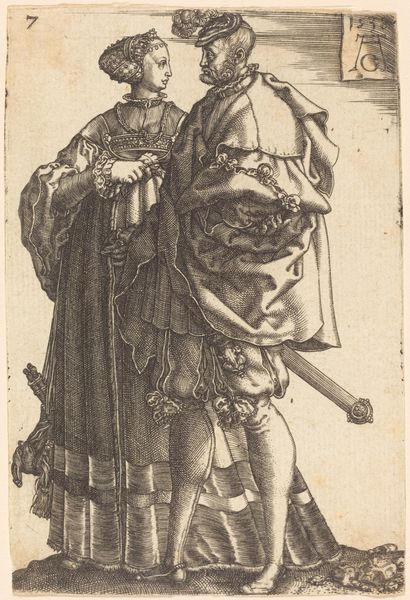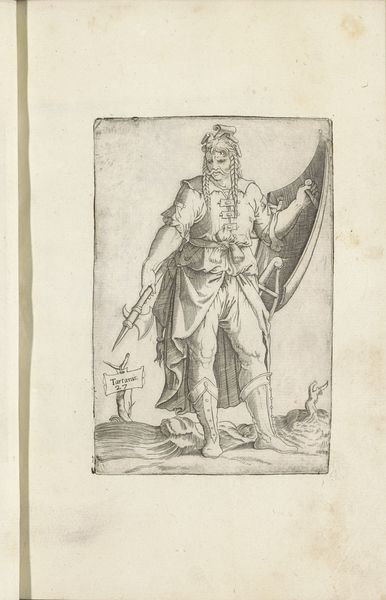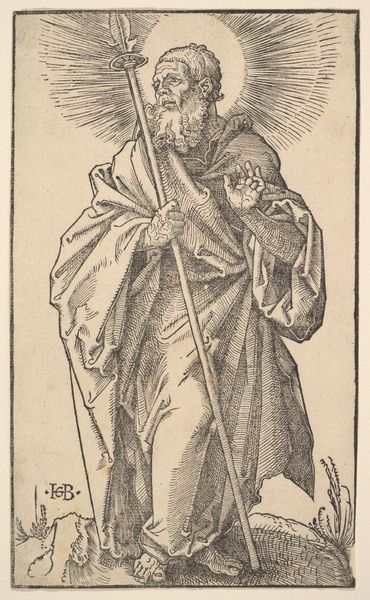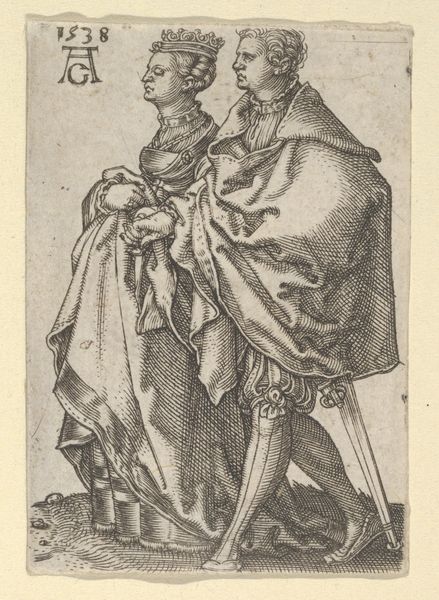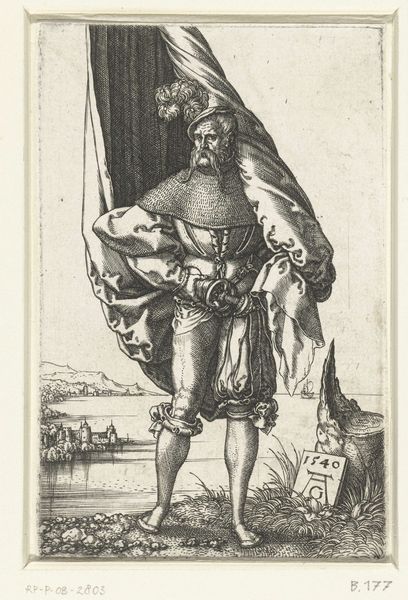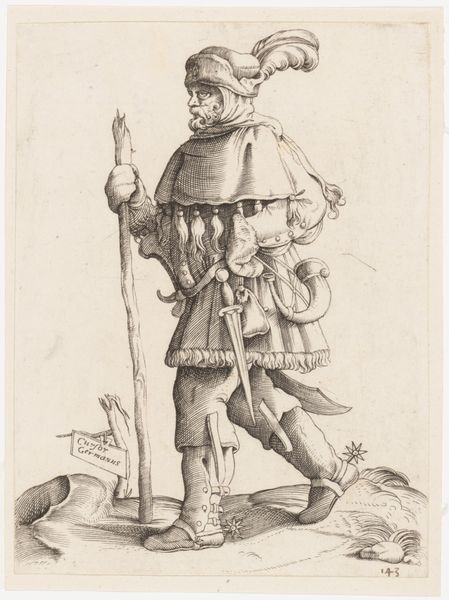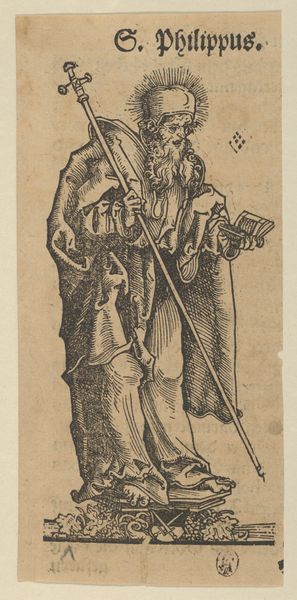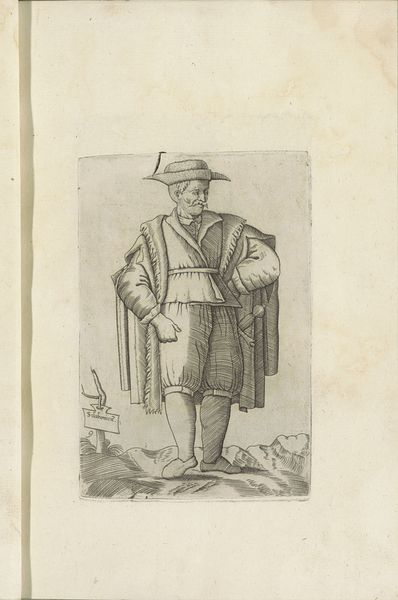
Noord-Afrikaanse, islamitische pelgrims met vaandels, terugkerend uit Mekka 1555 - 1568
0:00
0:00
print, engraving
# print
#
islamic-art
#
history-painting
#
engraving
Dimensions: height 273 mm, width 176 mm
Copyright: Rijks Museum: Open Domain
This print, made in the mid-16th century by Léon Davent, depicts North African Islamic pilgrims returning from Mecca. It's an etching, meaning the image was incised into a metal plate, likely copper or iron, with acid. The plate would then be inked and printed, transferring the image to paper. Consider the labor involved. First, the meticulous work of the artist to create the image. But also, the labor of the pilgrims themselves, returning from a long journey that would have taken months, if not years. The choice of printmaking, as a relatively inexpensive and reproducible medium, also speaks to the circulation of knowledge. This print allowed Europeans to learn about, and perhaps form opinions about, distant peoples and customs. The fine, precise lines of the etching create a sense of detail and realism. The image is not just a depiction of a religious practice, it's also a product of a specific set of social, economic, and technological conditions. The image, made through a labor-intensive process, speaks to the human labor of its subjects.
Comments
No comments
Be the first to comment and join the conversation on the ultimate creative platform.
